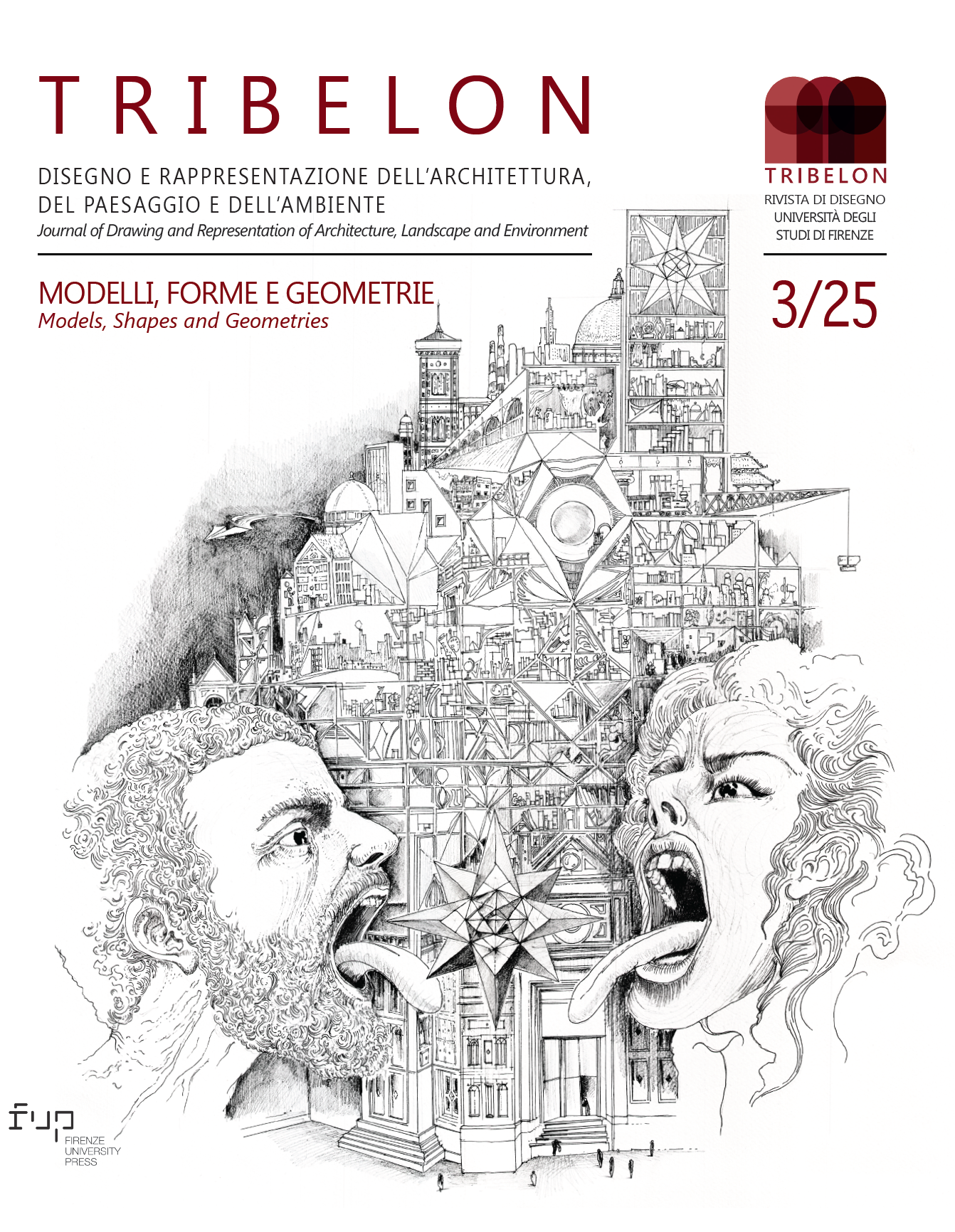Published 2025-06-09
How to Cite
Copyright (c) 2025 Giovanni Anzani

This work is licensed under a Creative Commons Attribution 4.0 International License.
Abstract
Taking inspiration from the theme of the magazine’s third issue, this article offers an algorithmic reworking of the classical notions at the foundations of descriptive geometry: the fundamental geometric entities (point, line and plane); the fundamental conditions (incidence, parallelism and perpendicularity) and the auxiliary ones (collinearity and coplanarity); and the graphical operations (drawing and verification). These notions have long since moved from analogue paper (2D) to digital CAD (2D/3D), gaining a third dimension in vector space; here we propose a further transition through a set of algorithms that can automate and extend the practical potential of these foundations.
The text describes the AutoLISP algorithms designed to suitably redefine, within AutoCAD, the aforementioned foundations of descriptive geometry. We will illustrate the predicates capable of performing the graphical verification of the fundamental and auxiliary conditions, and the procedures capable of carrying out the drawing operations that allow the unique determination of fundamental geometric entities - subsequently drawable in AutoCAD - by applying the fundamental conditions in combination. This will be followed by an application of descriptive geometry specifically devoted to the theme of equidistance between geometric entities.
Taken together, these topics are the outcome of a multi-year research project that has produced a code listing with over 400 function definitions; to make it easier to read, we have tried to name the variables containing points, lines and planes as (Pu, Pu1, Pu2, …), (Re, Re1, Re2, …), (Pi, Pi1, Pi2, …), and the conditions as (App Par Per All Com).
References
- Autodesk, AutoCAD: manuale di personalizzazione release 13, Autodesk development B.V., 1994.
- Anzani Giovanni, Algoritmi di geometria descrittiva in AutoLISP su punti rette e piani, Lulu, 2018.
- Berzolari Luigi, Geometria analitica – II, Curve e superficie del secondo ordine, Editore Ulrico Hoepli, Milano, 1916.
- Campedelli Luigi, Lezioni di geometria Vol. 1° e 2, Cedam, Padova, 1967
- Standiford Kevin, AutoLISP to Visual LISP. Thomson Learning (Autodesk Press), Canada, 2001.


